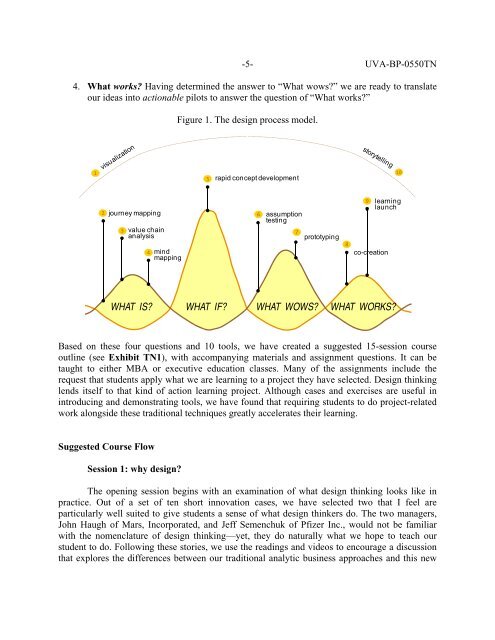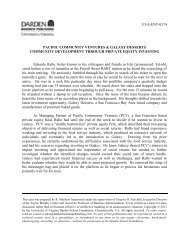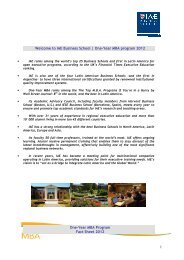UVA-BP-0550TN INNOVATION AND DESIGN THINKING Teaching ...
UVA-BP-0550TN INNOVATION AND DESIGN THINKING Teaching ...
UVA-BP-0550TN INNOVATION AND DESIGN THINKING Teaching ...
Create successful ePaper yourself
Turn your PDF publications into a flip-book with our unique Google optimized e-Paper software.
-5- <strong>UVA</strong>-<strong>BP</strong>-<strong>0550TN</strong><br />
4. What works? Having determined the answer to “What wows?” we are ready to translate<br />
our ideas into actionable pilots to answer the question of “What works?”<br />
1<br />
2<br />
journey mapping<br />
Figure 1. The design process model.<br />
Based on these four questions and 10 tools, we have created a suggested 15-session course<br />
outline (see Exhibit TN1), with accompanying materials and assignment questions. It can be<br />
taught to either MBA or executive education classes. Many of the assignments include the<br />
request that students apply what we are learning to a project they have selected. Design thinking<br />
lends itself to that kind of action learning project. Although cases and exercises are useful in<br />
introducing and demonstrating tools, we have found that requiring students to do project-related<br />
work alongside these traditional techniques greatly accelerates their learning.<br />
Suggested Course Flow<br />
3<br />
value chain<br />
analysis<br />
mind<br />
mapping<br />
WHAT IS? WHAT IF? WHAT WOWS? WHAT WORKS?<br />
Session 1: why design?<br />
4<br />
5<br />
rapid concept development<br />
assumption<br />
testing<br />
prototyping<br />
learning<br />
launch<br />
The opening session begins with an examination of what design thinking looks like in<br />
practice. Out of a set of ten short innovation cases, we have selected two that I feel are<br />
particularly well suited to give students a sense of what design thinkers do. The two managers,<br />
John Haugh of Mars, Incorporated, and Jeff Semenchuk of Pfizer Inc., would not be familiar<br />
with the nomenclature of design thinking—yet, they do naturally what we hope to teach our<br />
student to do. Following these stories, we use the readings and videos to encourage a discussion<br />
that explores the differences between our traditional analytic business approaches and this new<br />
6<br />
7<br />
8<br />
9<br />
co-creation<br />
10








